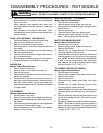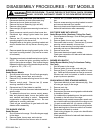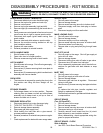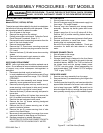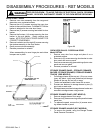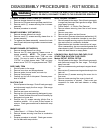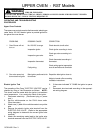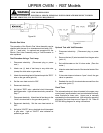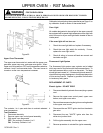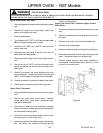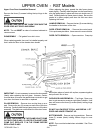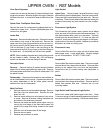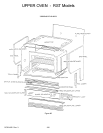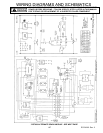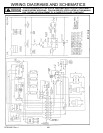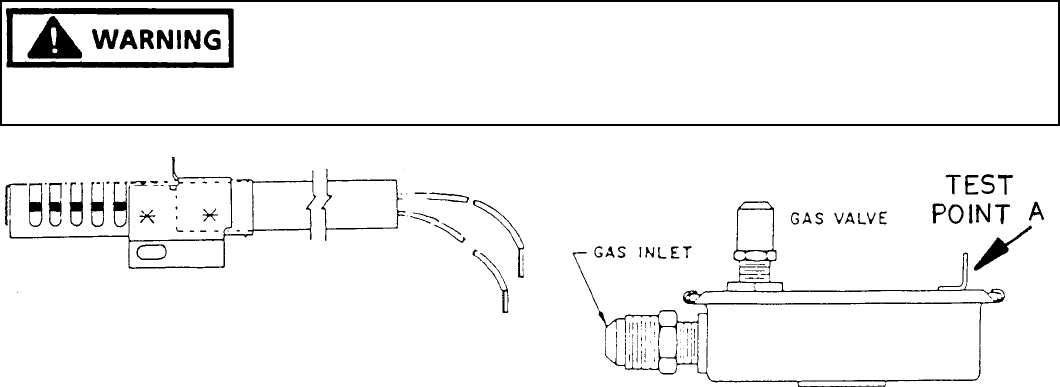
UPPER OVEN - RST Models
101 RC231002 Rev. 3
Figure 90
Electric Gas Valve
The operation of the Electric Gas Valve Assembly can be
checked with the use of an incandescent test lamp (105 -
120 V., 7 watt bulb). An optional test procedure for the
Electric Gas Valve Assembly using a Volt/Ohmmeter is
also explained.
Test Procedure Using a Test Lamp:
1. Disconnect electricity. (Disconnect plug or power
cord.)
2. Attach one (1) lead of test lamp to any white wire
(except for white wire on gas valve).
3. Attach the remaining lead of the test lamp to the "RED"
wire on the gas valve (point A).
4. Set the oven heat control to 350°.
5. Reconnect electricity.
6. No light at "RED" wire = electrical circuit interrupted
before gas valve. Light at these terminals, proceed to
Step 7.
7. Disconnect electricity. Attach lead of test lamp to the
"white" wire terminal on the gas valve (point A).
8. Reconnect electricity. Set the oven heat control at
350°.
9. No light at "WHITE" wire = electrical circuit interrupted
in gas valve. Light at "WHITE" wire indicated an
operative gas valve.
Figure 91
Optional Test with Volt/Ohmmeter
1. Disconnect electricity. (Disconnect plug or power
cord.)
2. Remove the two (2) wire terminals from the gas valve
(point A).
3. Set volt/ohmmeter on the X1 ohms scale. (Zero the
meter.)
4. Attach a meter lead to each of the terminal studs of the
valve.
5. If the meter does not show an "open" circuit, the gas
valve is operative.
6. Reattach the two (2) wire terminals removed from the
gas valve (point A).
Clock Timer
The automatic electronic timer is located in the upper oven
control panel (see illustration) and controls bake-broil-self-
clean functions for lower oven. Upper oven is manually
operated by the thermostat knob. Instructions for operating
and testing the clock timer are on Pages 56 - 59. Refer to
RST399 wiring diagram for wiring connections.
FIRE OR EXPLOSION
TO AVOID THE RISK OF ELECTRICAL SHOCK, PERSONAL INJURY OR DEATH DISCONNECT POWER
BEFORE SERVICING, UNLESS TESTING REQUIRES IT.



